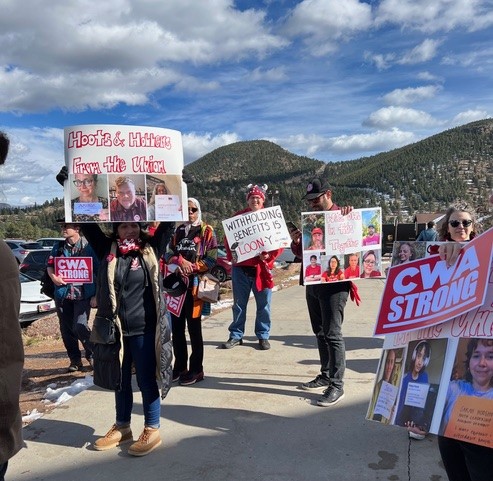The Elephant in the Room
By Sally Nole
Volunteer BHAS member
This editorial has been updated as of 12/08/2023
*These thoughts are mine alone, and do not represent the opinions of BHAS.
This November I went to The National Audubon Conference in beautiful Estes Park, Colorado. There were 330 Audubon members in our flock. Our roosting territory ranged from the Boreal Forest in Manitoba, Canada to wetlands in Chile, from Connecticut to Washington state, and from Trinidad to Columbia. There were people in their teens to people in their 80’s. There were Caucasians, Indigenous, Black, Hispanic, Asian and Pacific Islanders. It really did feel like a global community united for a single purpose – to bend the curve downward, halting the precipitous decline of migratory birds in the Americas and incidentally help save humanity too.
This was a conference where almost every session was a small comfortable gathering of people with a shared experience: the experience of being lost and confused (possibly from oxygen deprivation) birding enthusiasts trying to navigate this sprawling, very hilly YMCA Rocky Mountain campus located at 8400 feet, in early November darkness. All of us were dazed and lost, trying to find our way to the next session. We each would stop and ask if we could assist because just maybe we had already been to that building. Audubon had made maps and attempted to provide helpful directions. Maybe it was the altitude, maybe it was that first trek in the dark to our various sleeping lodges while lugging all our own baggage up and down the hills. Whatever it was, this group of 300-plus birders was well-bonded by 7 a.m. breakfast the next day. The ice was broken, and we could and would greet each other kindly and honestly thereafter.
This was not a conference where you sit and are talked at and given numerous pages of info that may be helpful later. The sessions were small and facilitated by Audubon staff and volunteers. The topics ranged from learning about the tools Audubon had to offer us so we could stop reinventing the wheel, to teaching us how to implement “Flight Plan” (see next paragraph) locally and see its impact hemispherically. One of the most interactive tools was Bird Migration Explorer, which is an app to track tagged birds migrating, breeding, and overwintering.
We had guest speakers talk about successful projects done by indigenous people in the Boreal forest in Canada, the wetlands in Chile, and the inner city of Gary, Indiana. Audubon asked us what else we needed from the state and national level to connect and function better. We gave them an earful and they took notes. Time will tell what they do with our suggestions.
The conference had two interwoven themes. One was Flight Plan, a five-year strategic plan aimed at reversing the downward trajectory of bird numbers and the other was incorporating EDIB (Equality, Diversity, Inclusion and Belonging) into each step along Flight Plan. Migratory bird loss is staggering, with climate change and the loss of habitat decimating these species. Audubon wants to connect the people doing conservation work in North, South and Central America. If we are connected and see successful efforts in both the northern and southern ranges of these migratory birds, then hopefully we will multiply our efforts to conserve essential bird habitat and flyways. In doing so we dampen the consequences of climate change.
This ambitious Flight Plan is going to take a commitment from all of us. There is no room for elitism, discrimination, or second-class citizenship status. National Audubon appears to have noble aspirations: fully embrace EDIB, really want to listen to the people doing the work, and make it easier for all the separate and isolated chapters across the hemisphere to communicate and share ideas for the benefit of both birds and humans.
But then there was this elephant in the room.
At the conference outside the entrance to the dining hall were Audubon employees picketing and asking for good faith bargaining on the part of National Audubon. There was also a union table inside the Assembly Hall vendors’ area. At the workers’ table was information on their struggle to gain their first contract; postcards were available to voice support for the workers of National Audubon who have been trying to get a union contract for more than 18 months’ time.
Audubon spent several years deciding whether to change their name to avoid the negative association with slavery. They decided that if the organization proved to be a changed culture both now and in the future, then the brand was strong enough to weather the storm. Yet here they are ignoring the pleas of their own employees for the simple right to a union contract. Audubon, instead of shedding its negative history, continues to devalue their workers. Can they weather this storm?
I fear that this organization, with its 1980’s approach to 21st century labor relations, will have a rough time surviving without some serious changes. Therefore, to help bring Audubon into the future, please learn more and sign the online petition supporting the workers.
Info on the workers struggle to form a union: https://www.birdunion.org/
Sign the solidarity petition at: https://actionnetwork.org/letters/birdunionsolidarity








